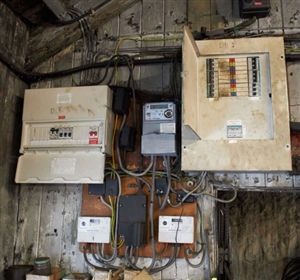The three lines all appear to make their way to the 3-phase board, but I cannot quite see why is happening to the neutrals.
Presumably the meter fitters were content that all was in order, although I suppose that the supplier's' principal concern is billing.
Would nobody give it a satisfactory EICR?

